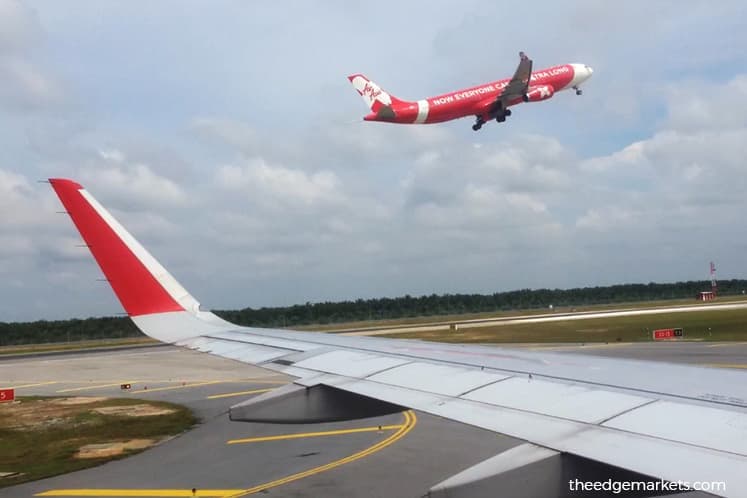
This article first appeared in The Edge Financial Daily on September 26, 2017
AirAsia Bhd
(Sept 25, RM3.53)
Maintain add with a target price of RM3.51: Malaysia Airports’ passenger traffic numbers have resumed growth since mid-2016, after two consecutive years of low single-digit growth. So far in 2017, the growth has been driven primarily by international passenger traffic growth (up 14.5% year-on-year [y-o-y] for the first eight months of 2017 [8M17]), against slower growth for domestic passengers (up 6% y-o-y for 8M17). This is explained by the weak ringgit encouraging inbound tourists into Malaysia, as well the mature state of the domestic travel market.
In addition, we have made a couple of observations which would be of interest to AirAsia Bhd investors. Passenger traffic at Kuala Lumpur International Airport’s (KLIA) Main Terminal Building (MTB), where full-service carriers like Malaysia Airlines Bhd and Malindo Airways Sdn Bhd are based at, has seen a dramatic decline in passenger traffic growth from May 2017 onwards, slowing down to 12% to 13% y-o-y, from more than 20% y-o-y growth in the preceding months, while in July and August 2017, MTB passenger traffic growth slowed down to low single-digit. There are two reasons for this: Firstly, Malindo rebranded itself as a full-service airline and moved to KLIA MTB on March 15, 2016, so the y-o-y slowdown in passenger traffic growth at MTB was due partly to the high base effect. Secondly, Malaysia Airlines and Malindo have both cut domestic capacity from KLIA. Malindo deployed around 25,000 one-way domestic seats per week from KLIA at the start of 2017, but this declined to about 15,000 seats in early-April, and is expected to remain at this level for the rest of the year.
Meanwhile, Malaysia Airlines started 2017 with about 75,000 domestic seats per week from KLIA but with its capacity cuts in July to September, the airline is expected to end the year with 62,000 seats. The cuts may be related to Malaysia Airlines’ plans to return six B737-800s to lessors by the fourth quarter of 2017. As a result, KLIA MTB’s domestic passenger traffic saw a massive 20% y-o-y contraction for two consecutive months in July and August.
Altogether, Malaysia Airlines and Malindo are expected to reduce their domestic capacities from KLIA by 23,000 seats per week by end-2017, or a substantial drop of 23% measured from the start of the year. Conversely, AirAsia started this year with 102,000 domestic weekly seats, but is expected to end 2017 with around 114,000 seats per week from KLIA, an increase of 12,000 seats per week. As a result, AirAsia’s market share of domestic seats from KLIA may rise from 51% to 60% by end-2017.
With an absolute decline in total domestic capacity from KLIA, but no signs of a decline in domestic passenger numbers, we can expect AirAsia’s domestic yields and domestic load factors to be very strong in the second half of financial year 2017 (2HFY17). AirAsia is taking advantage of its competitors’ pullback by expanding its fleet by 10 planes in Malaysia in 2HFY17 after adding none in 1HFY17. We think AirAsia’s strategy to entrench itself strongly in Malaysia is a brilliant move to edge out its rivals. — CIMB Research, Sept 25